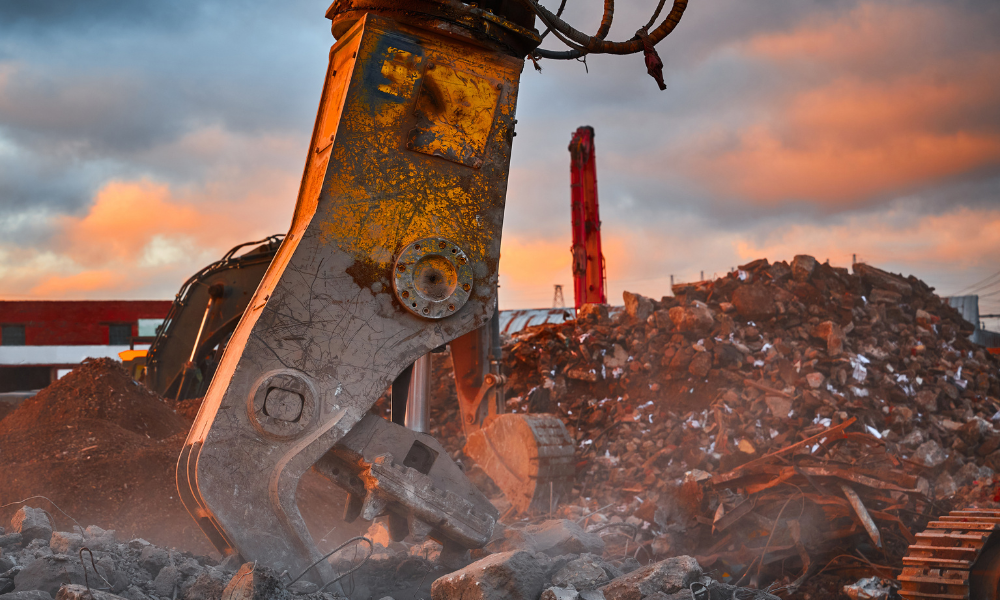NSC releases report as part of 'moral imperative' to create equitable safety outcomes

The National Safety Council (NSC) recently released a comprehensive report titled "The Intersection of DEI and MSDs: Ensuring Equitable Outcomes." This report explores how diversity, equity, and inclusion (DEI) intersect with musculoskeletal disorders (MSDs), the most common workplace injury in North America.
"At the National Safety Council, we believe fostering diversity, equity and inclusion is not only a moral imperative but also essential for creating safer and healthier work environments for all,” said Lorraine Martin, NSC president and CEO, in a press release.
The report, published through the MSD Solutions Lab—an NSC initiative funded by Amazon—analyzes workplace factors that lead to inequitable MSD outcomes and offers solutions for mitigation. It references over 100 academic publications and sources, examining work organization, workplace and equipment design, safety culture, psychological safety, and psychosocial risk factors.
Work organization and design
"We wanted to address this issue comprehensively, ensuring that our efforts are inclusive and equitable,” explains Sarah Ischer, senior program manager of the MSD Solutions Lab at NSC.
The report highlights how shift work, long hours, and part-time employment can significantly increase MSD risks. "Shift work and demanding schedules can increase the risk of MSDs because of less time for adequate sleep and recovery from work, longer exposure to hazards and demands at work, and less time to attend to non-work responsibilities,” says Ischer.
Workplace and equipment design also play critical roles. Traditional designs often fail to accommodate the diverse physical characteristics of the workforce, putting many at risk. "An employee who uses a wheelchair or an employee smaller than the fifth percentile female may have difficulty accessing the full range of their workstation, increasing their risk of MSDs," says Ischer. This is not a matter of who the workers are but rather how well the workplace accommodates their needs.
Safety culture and psychological safety
Creating an inclusive safety culture is vital for mitigating MSD risks. The report indicates that workplaces lacking benefits such as paid sick leave may discourage employees from taking necessary time off, leading to higher injury rates. Moreover, psychological safety—defined by a sense of belonging and being valued within the organization—plays a significant role in employee well-being.
"Psychological safety is significantly influenced by a sense of belonging to the organization or team, with managers showing appreciation for their employees and involving them in decision-making," Ischer emphasizes. "Voice suppression can be particularly harmful to employees of color, as they may already perceive their voices and opinions as less valued than the majority group." The report found that in the United States Black and Hispanic workers are often the most uneasy about reporting unsafe work conditions, exacerbating safety concerns. In Canada, similar feelings have been reported among foreign workers and newcomers who feel their status in the country could be at risk if they fail to maintain employment.
Common psychosocial risks such as job stress, lack of control, dissatisfaction, and poor support structures also contribute to the prevalence of MSDs. These risks are more pervasive in jobs predominantly held by workers of colour and female workers. "It's important to understand that these psychosocial risks are more common in jobs that employ a diverse workforce, making it imperative to address these issues through inclusive and equitable safety practices," Ischer explained.
Practical solutions for health and safety professionals
The NSC report doesn't just identify problems; it also provides actionable solutions based on the hierarchy of controls. Recommendations include eliminating high-risk jobs, adapting workplace designs to accommodate diverse physical needs, providing adjustable devices and technology, establishing inclusive policies and procedures, and ensuring PPE fits all employees appropriately.
"We're not only focusing on the research and what it's telling us, but also on implementing equitable solutions," says Ischer. "For example, adjustable devices and ergonomic accommodations can be implemented relatively easily and can make a significant difference in reducing MSD risks."
The report is just the beginning of NSC's efforts to integrate DEI into workplace safety. Ischer hints at future initiatives, noting, "we are continuing this work within the MSD Solutions Lab. Our next step is focusing on non-physical risk factors, like stress and fatigue, to create a more holistic approach to workplace safety."
As the NSC pushes forward with these pioneering efforts, it becomes increasingly clear that integrating DEI into safety practices is not just beneficial but essential. Health and safety professionals are encouraged to leverage the findings and recommendations from this report.





